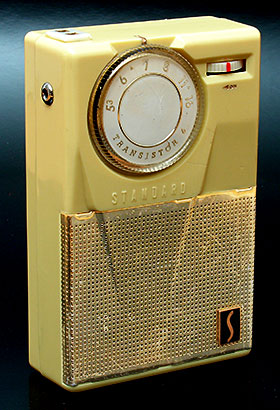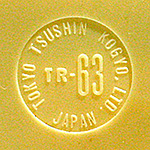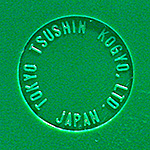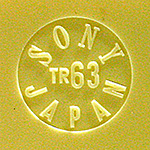Collecting Variants
Sooner or later, the collector will come across another of some item already possessed. On close inspection, this new discovery is seen to be different in some way than the one already in the collection. This we call a variant.
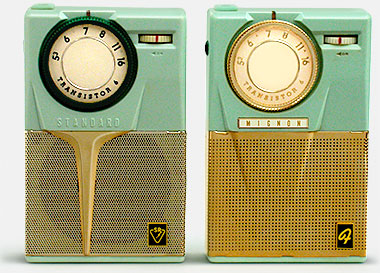
This is a major fork in the road for a collector. To the variant, some collectors will say, “So what? I’ve got one like it. Close enough.” But other collectors, like me, will be fascinated by the differences, grab it up, and go right out in the hope of finding more variants.
When I began collecting transistor radios many decades ago, I knew of no documentation at all about them. I assumed there would be maybe 50 or 60 models, tops, and I would try and get them all. Well, I was very wrong. There are many hundreds of models, thousands if you count all the variants. And yes, I am still trying to get them all.
Above are variants of one of the earliest pocket transistor radios from Japan (1958). Experienced transistor hounds will recognize the Standard SR-F22 and its Mignon variant as shown in my Standard Transistor Radios book. Variant cousins of these radios include the Hitachi TH-621, AMC TR-600, and Lafayette FS-110. The radio above left is yet another variant, branded Standard, but with the tuning knob and grille of a Mignon. Found in Argentina, this radio has an ‘S’ logo that is unlike any other Standard logo I’ve seen anywhere.
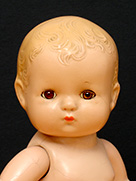
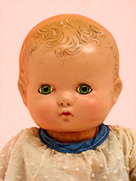
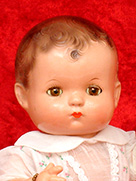
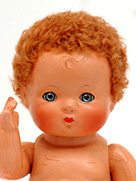



Many variants are unintended, merely the result of changes or adjustments made in the manufacturing process. The Sony radio shown below is an example of this. Sony had absolutely no expectation of increasing sales by changing the label on the back. But would a doll fancier with a brown-eyed Patsy Baby be tempted to also adopt her blue- and green-eyed sisters? Effanbee (the doll’s maker in the 1930s) was counting on it! So, intended or not, a variant is a variant and all are of interest to the serious collector.
By the way, one of these Patsy Baby doll variants is an imposter, not a variant but a knockoff copy made by a doll manufacturer other than Effanbee. Can you guess which one?
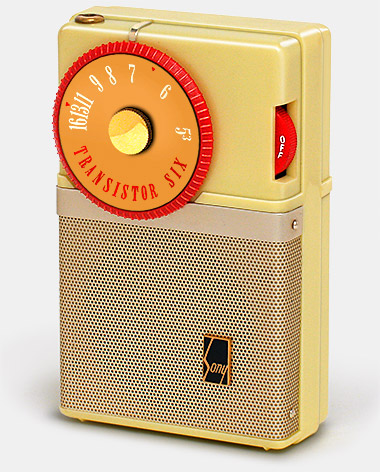
Sometimes the variation is just a small detail. But it can be, or at least seem like, an important one.
Here’s an example on a transistor radio. Early Sony TR-63 models from 1957 were marked in a small debossed circle on the back with the company’s original name, Tokyo Tsushin Kogyo, Ltd. Some of these early markings included the model number, some did not. Later examples in 1958 dropped the Tokyo Tsushin name in favor of the new corporate name, Sony. Variants! I must have them all!
You may have noticed the similarity of this Sony TR-63 to the Standard radio above, and this illustrates still another point. Though alike in many ways, neither is a variant of the other as they are not from the same maker. In the broadest sense, one might be considered a knockoff of the other (and I collect knockoffs, wouldn’t you know?) but in my judgment that isn’t the case here. Perhaps we see a little design influence, but that is not the same as copying. Both Sony and Standard had too much competence and too much pride for that.
A word about condition . . .
Some collectors will acquire an item in fair or even poor condition as a placeholder, while others will simply go without rather than accept less than perfection. I don’t understand this latter point of view. Being flawed myself, I have no trouble forgiving an object for being damaged in some way. I’d like everything perfect, of course, but I know it just isn’t always attainable. And I’m more forgiving of damage on certain items than others in, I think, a quite rational way.  For example, in my radio collection I can accept damage more easily on a portable radio meant to be carried around and set down on the sand and knocked over by a beach ball than I can accept damage on a clock radio meant to sit demurely by the bed. That said, damage is damage and I do not agree with the sliding scale on which some people measure it. Have you heard someone assert that something was in good condition “for its age?” What does that mean? If the Mona Lisa were covered in tar, would it still be said to be in “good condition” considering that it is over 500 years old?
For example, in my radio collection I can accept damage more easily on a portable radio meant to be carried around and set down on the sand and knocked over by a beach ball than I can accept damage on a clock radio meant to sit demurely by the bed. That said, damage is damage and I do not agree with the sliding scale on which some people measure it. Have you heard someone assert that something was in good condition “for its age?” What does that mean? If the Mona Lisa were covered in tar, would it still be said to be in “good condition” considering that it is over 500 years old?
And a word about the “lesser” items in a collection
Some collectors want only the “best of the best,” the rarest and most desirable pieces. I’ve heard this boasted about by a few collectors, usually new ones. Not in all my collections, but at least in my radio collection I have taken the route of the “completist.” It takes up a lot of space, I must admit, but I find that even the less interesting and less important radios still somehow inform the others — often in unforseen and unpredictable ways. I have learned a great many things about these little items, much of it from the “lesser” examples that snobs shun.
